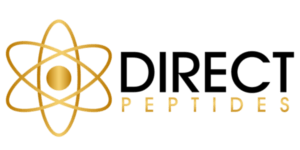
GHK-Cu Capsules: Copper Peptides For Skin
GHK-Cu Capsules: Copper Peptides For Skin In an ever-evolving world of beauty standards, the quest for vibrant, healthy skin remains
In the realm of scientific research and therapy, peptides have rapidly emerged as a focus of interest. These short chains of amino acids serve as vital building blocks in our body, playing pivotal roles in a myriad of biological processes. Their significance goes beyond individual impact; when used in combinations – or ‘peptide stacks’ as they are commonly known – their potential is further magnified. This Greece blog post aims to delve into the world of peptide stacks, exploring their unique synergistic effects, their role in research, and their therapeutic potential, providing insight into why they are fast becoming a cornerstone in both research and therapeutic practices.
Peptides, primarily composed of 50 or fewer amino acids, are smaller and more straightforward than proteins, yet they hold immense potential in the sphere of scientific research and therapy. They mimic the functions of hormones in our body, regulate various physiological processes, and possess the ability to bind to specific receptors causing a multitude of biological effects. Due to these traits, peptides have become a Greece focal point in the exploration of new therapeutic methods for various diseases, from metabolic disorders to cancers. With their lower toxicity, high specificity, and versatility, peptides are increasingly being regarded as the future of precision medicine. However, the true potential lies not just within individual peptides but in their combined use or ‘peptide stacks‘, which are believed to deliver synergistic effects, enhancing the overall therapeutic impact. It is this unparalleled potential that leads to the escalating importance of peptides, and more prominently, peptide stacks in research and therapy.
Peptide stacks can be defined as the deliberate and strategic combination of two or more peptides to leverage their synergistic effects. This stacking allows for heightened biochemical interactions, enhancing overall efficacy and therapeutic results. These stacks are not haphazard mixtures, but carefully selected combinations, each designed to maximize the potential of individual peptides and elevate their collective impact. This approach broadens the scope of peptide use in research and therapy, enhancing potential outcomes and paving the way for groundbreaking discoveries in the realm of precision medicine. Direct Peptides supply high quality peptide stacks online for research.
Peptide stacks operate on the principle of synergy. The collective effect of the peptides in a stack is greater than the sum of their individual impacts. Each peptide in the stack has its unique features and functions, but when they are combined, the biochemical interactions between them are enhanced. These heightened interactions can result in amplified therapeutic effects, such as increased metabolic efficiency or enhanced immune response. Furthermore, the use of peptide stacks allows for a more targeted approach in Greece research and therapy. Specific peptides can be selected and combined based on their known effects and the desired outcome, allowing researchers and clinicians to tailor the stacks to the needs of the individual or study. This synergy not only extends the potential applications of peptides but also increases the chances of successful outcomes in both research and therapeutic settings.
KPV (Lys-Pro-Val) and BPC-157, a pentadecapeptide, have been used together in research owing to their complimentary healing and anti-inflammatory effects. This stack is particularly scrutinised for its potential in wound healing and tissue repair.
Ipamorelin, a ghrelin analogue, and Sermorelin, a synthetic form of growth hormone-releasing hormone (GHRH), form a popular peptide stack. This combination is often investigated for its potential role in promoting growth hormone release, which can lead to muscle growth and fat loss.
GHRP-2 (Growth Hormone-Releasing Peptide 2) and CJC-1295 without DAC (Drug Affinity Complex), when stacked together, are believed to stimulate natural growth hormone release more effectively. This combination is popular in research settings for its implications in muscle growth, fat loss, and anti-ageing.
LL-37, a cathelicidin family peptide, and Thymosin Alpha-1, an immune system modulator, form a unique peptide stack. This combination is being studied for its potential in enhancing immune responses and combating infections.
Sermorelin and GHRP-2 are stacked together for their combined potential in enhancing growth hormone release. This stack is often scrutinised for its implications in increased muscle growth and improved metabolism.
Ipamorelin and Tesamorelin form a potent peptide stack that is commonly investigated for its potential effects on growth hormone release and fat loss, especially in the context of HIV-associated lipodystrophy.
In Greece research, peptide stacks are employed in a variety of contexts to explore possible synergistic therapeutic effects. They are instrumental in experimental studies aimed at understanding complex physiological processes in the human body. For instance, the combined use of peptide stacks can play a significant role in examining cellular activities, immune responses, metabolic processes, and more.
Research peptides stacked together offer the advantage of targeted and comprehensive study of cellular pathways. By combining peptides with known effects on certain pathways, Greece researchers can observe and analyse the comprehensive outcome of these interactions. This leads to a better understanding of the specific roles and mechanisms of these peptides, contributing to advancements in molecular biology and medical research.
Furthermore, peptide stacks are invaluable in the development and testing of new therapeutic strategies. By observing how different peptides interact within a stack, researchers can identify potential synergistic effects that may lead to more effective treatments with fewer side effects. These Greece research peptides, combined in a stack, allow for a broader understanding of their biological roles and the potential therapeutic applications, paving the way for more precise and personalised medical treatments.
Peptide stacks’ use in research also extends to drug discovery and development. The combined effects of these peptides can provide insights into new potential drug targets and the development of more effective and safer drugs. By investigating the synergistic effects of peptide stacks, research can fast track the discovery of novel treatments for various diseases and disorders.
In conclusion, the use of peptide stacks in research is vital for the further exploration of molecular and cellular processes, development of new therapeutic strategies, and discovery of novel drugs. Despite the challenges posed in terms of stability and delivery, the potential benefits that peptide stacks bring to the research table are immense, making them an invaluable tool in the realm of scientific research.
The future of Greece peptide stack research is vast and highly promising, with several potential areas of exploration. Firstly, there is an increasing interest in combining peptides with differing mechanisms of action to create stacks that can target multiple pathways simultaneously. This could lead to the development of more comprehensive treatments for complex diseases and conditions. Secondly, as our understanding of the human genome continues to expand, there is the potential to develop peptide stacks tailored to individual genetic profiles, promoting the advancement of personalised medicine.
Furthermore, the continuous development of innovative peptide delivery methods can significantly enhance the potential of peptide stacks. Exploring novel delivery systems could improve the bioavailability and stability of peptides, leading to more effective therapeutic outcomes. Lastly, incorporating computational and artificial intelligence technologies in peptide stack research could revolutionise the speed and accuracy of identifying potent peptide combinations.
Overall, the future direction of peptide stack research is poised to extend the boundaries of our current understanding, paving the way for innovative therapeutic strategies and potential breakthroughs in disease treatment.
Peptide stacks are increasingly gaining recognition for their therapeutic potential across several fields of medicine. The capacity of peptides to target specific cell receptors with high affinity and specificity makes them attractive candidates for therapeutic applications. When combined into stacks, peptides can exhibit synergistic effects, enhancing the overall efficacy and reducing potential side effects.
For instance, in the realm of immunotherapy, peptide stacks can enhance immune response by simultaneously activating different immune cells, leading to comprehensive pathogen elimination. In regenerative medicine, peptide stacks can promote tissue healing and regeneration by stimulating various growth factors and cell proliferation pathways.
In the context of metabolic disorders and obesity, certain peptide stacks have been demonstrated to regulate appetite, enhance metabolism and promote fat loss. Furthermore, in the field of ageing and aesthetics, peptide stacks have shown potential in improving skin elasticity, promoting muscle growth and increasing bone density.
Moreover, peptide stacks have been employed in Greece cancer research, with certain stacks exhibiting potential in inhibiting tumour growth, enhancing the efficacy of chemotherapy, and reducing associated side effects.
In summary, the therapeutic applications of peptide stacks are diverse and promising, spanning across immunology, regenerative medicine, metabolism, ageing research and oncology. With ongoing Greece research and development, the potential of peptide stacks to revolutionise disease treatment and management is immense.
Using peptide stacks in therapy presents a myriad of benefits. Foremost, the use of peptide combinations allows for synergistic effects, which can greatly enhance therapeutic efficacy. This is particularly important for complex diseases where multiple physiological pathways may be involved.
In addition, peptide stacks can reduce potential side effects. Utilising multiple peptides in smaller doses can potentially lower the risk of adverse reactions compared to the use of a single peptide at a higher dose.
There are also unique benefits related to the nature of peptides themselves. Peptides are recognised for being highly specific – they interact with specific cell receptors and can therefore target precise sites of action, reducing off-target effects.
Furthermore, most peptides are biologically and metabolically stable, improving their efficacy and safety profile. Lastly, with the advent of advanced delivery methods, the bioavailability of peptides can be significantly enhanced, further increasing the potential of peptide stacks in therapy.
In conclusion, the benefits of using peptide stacks in therapy extend from increased efficacy and reduced side effects, to specificity, stability and enhanced bioavailability. These attributes contribute to their potential role as powerful tools in disease treatment and management.
One of the most significant case studies demonstrating the therapeutic power of peptide stacks involves the combination of Ipamorelin and Tesamorelin in treating HIV-associated lipodystrophy. In a study published in AIDS Research and Human Retroviruses in 2010, this peptide stack notably reduced abdominal fat in HIV patients. Their synergistic action not only tackled the typical metabolic issues associated with HIV therapy but also showed potential for broader applications in fat loss treatments.
Given their high specificity, peptide stacks are gradually making their mark in oncology. Certain peptide stacks have shown potential in inhibiting tumour growth, enhancing the effectiveness of chemotherapy, and minimizing associated side effects. These peptide stacks can simultaneously target different components of tumour cells, leading to a comprehensive approach to cancer treatment.
In the field of ageing and aesthetics, peptide stacks have shown promise in improving skin elasticity, increasing muscle growth, and improving bone density. These stacks, by targeting multiple cellular pathways and signalling mechanisms, can effectively counter the deteriorating effects of ageing, thus enhancing the overall quality of life for the ageing population.
These Greece case studies provide compelling evidence of the potential that peptide stacks hold in the realm of therapeutic application. The power of peptide stacks lies in their ability to target multiple pathways simultaneously, thereby providing a holistic approach to disease treatment and management. However, like any therapeutic approach, it is crucial to continue rigorous research and clinical trials to establish their safety and efficacy further.
The importance of peptide stacks in Greece research and therapy is undeniable, offering a diverse and promising array of applications across various medical fields. Their unique ability to synergistically enhance therapeutic efficacy, coupled with a high degree of specificity and potential to reduce side effects, places them at the forefront of advanced therapeutic approaches. Whether it’s in immunology, regenerative medicine, metabolism, ageing research or oncology, the potential of peptide stacks to revolutionise disease treatment and management is immense. From enhancing immune responses and promoting tissue healing to regulating appetite and improving skin elasticity, these stacks have shown profound potential. Greece Case studies across HIV-associated lipodystrophy, oncology, and ageing research further underscore the therapeutic power of peptide stacks. As research progresses, the role of peptide stacks in therapy is expected to become increasingly significant, shaping the future of disease treatment and management.
As we continue to delve deeper into the realm of Greece scientific research, it is imperative that we uphold our exploration and comprehension of peptide stacks. Our understanding of their potential is only in its nascent stage, with much more to be discovered. The promise indicated by these stacks in various therapeutic areas is too significant to overlook. As scientists, researchers, and Greece healthcare professionals, our collective curiosity and relentless pursuit of knowledge are what drive medical advancements forward. So, let us continue to dissect, study, and understand the profound potential that peptide stacks hold, for they may be the harbinger of a new era in disease treatment and management. With each experiment conducted, each clinical trial completed, and each paper published, we edge closer to unravelling the full capabilities of these peptide stacks. The journey is long and arduous, but the potential breakthroughs and transformational impact on healthcare make it a path worth traversing.
Ready to take your research to the next level? Look no further than Greece Direct Peptides for high-quality peptide stacks. With our vast selection of peptides and dedication to quality, we are your go-to source for all your research needs. Visit our website now and discover the potential of peptide stacks in advancing your project. Order from Direct Peptides today!

GHK-Cu Capsules: Copper Peptides For Skin In an ever-evolving world of beauty standards, the quest for vibrant, healthy skin remains

Explore the anti-aging effects of Epithalon And Thymalin Stack The pursuit of longevity and delaying the signs of aging is

What Is NAD+? Discover The Key Molecule in Human Physiology Hidden in cellular metabolism is a modest molecule that greatly

Exploring the Benefits of Vasoactive Intestinal Peptide (VIP) The quest for cutting-edge medical treatments is an ongoing saga, and in

401 N. Mills Ave, Ste B, Orlando, FL 32803, United States
